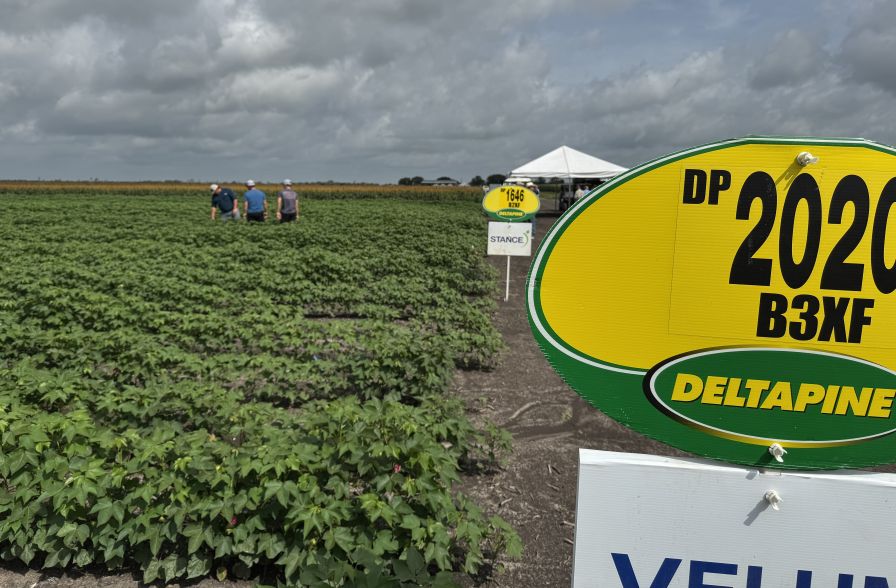Plexus: NY Futures Give Back Last Week’s Gains
In our last report we mentioned that the futures market would only be able to maintain an upward trajectory if there was a noticeable improvement in the physical market. Unfortunately that has not materialized, which is why this latest selloff shouldn’t come as a surprise to the trade.
Even the Chinese market, which has been a pillar of support over the past few months, has started to show some cracks recently. The arriving crop is pressuring local prices and it was reported that farmers are selling their seed cotton mainly to gins that are able to press standard sized bales, which is a requirement to be eligible for Reserve auctions, while many of the smaller ginners are currently reluctant in procuring cotton since they can’t make the numbers work in the cash market.
Support therefore hinges mainly on the Chinese Reserve’s willingness to absorb cotton from the marketplace and judging by this week’s activity they were definitely stepping in. After procuring nearly 138,000 tons since last Thursday, the Reserve has now taken up a total of 218,030 tons or 1.0 million statistical bales. The daily auction target has also been increased, amounting to 64,000 tons today, which is nearly double of what it was a week ago.
This signals that the Reserve is ready to shore up the local price in order to keep farmers content, otherwise they may consider a switch to grains next season. There is already anecdotal evidence that cotton acreage will drop in some of China’s eastern provinces next spring. The Reserve seems to be in the role of counterbalancing volatility by supporting farmers via its auction mechanism and then standing by to release these stocks again in case the market rallies to a level that inflicts pain on the local textile industry.
As we have pointed out before, the only way this Reserve support is going to reach the international market is via imports, either through quotas or by the Reserve buying cotton directly overseas. To what degree and when that may happen is still anybody’s guess. However, we feel that unlike in years past, the Reserve may take a much more dynamic approach when it comes to managing its stocks, trying to strike a balance between building new stocks and allowing additional imports.
Today’s US export sales report was considered a disappointment, since only 96,600 running bales net were added last week, although there were an additional 78,400 running bales sold for the 2012/13 marketing year. Turkey was by far the best buyer last week, booking a combined 132,400 running bales. What’s worrisome is that cancellations are still widespread, with a total of ten markets cancelling no less than 44,200 running bales. Also, shipments of just 90,300 running bales continue to lag behind and with over 5 million bales already classed, we can’t blame the lack of available bales for the slow pace of exports anymore.
With the more than ample supply in the US as well as in the global marketplace, it is becoming more difficult for the futures market to justify an inverted price structure on the board. This is why the Dec/March inversion has been fading away, closing today at just 32 points. We believe that the futures market is in the process of rebuilding carry all the way out to July 2012 and possibly beyond. As we have stated before, the fact that the certified stock is accumulating high grade/short staple cotton will help to force the issue, because we can’t imagine that any merchant would be interested in owning 40,000 bales of certified stock at today’s price unless there is an incentive in the form of carry.
So where do we go from here? All that these wild gyrations over the last couple of weeks have achieved is to expand the trading range slightly. Since September 21st the spot month has been confined to a range of just 857 points, between 96.47 and 105.05 cents. Although the fast arrival of the Northern Hemisphere crops and the generally weak tone in the physical market may argue for lower prices, strong buying by the Chinese Reserve has so far managed to keep the bears at bay. The relatively large amount of unfixed on-call sales in December, which at 2 million bales amounted to about 25% of open interest last week, is another element of support. Then there are cotton’s competitors for acreage, which are still holding up quite well with soybeans at 12.20 dollars and corn at 6.50 dollars per bushel. We should therefore see a continuation of the current sideways trend, albeit with a slight bias to the downside.









